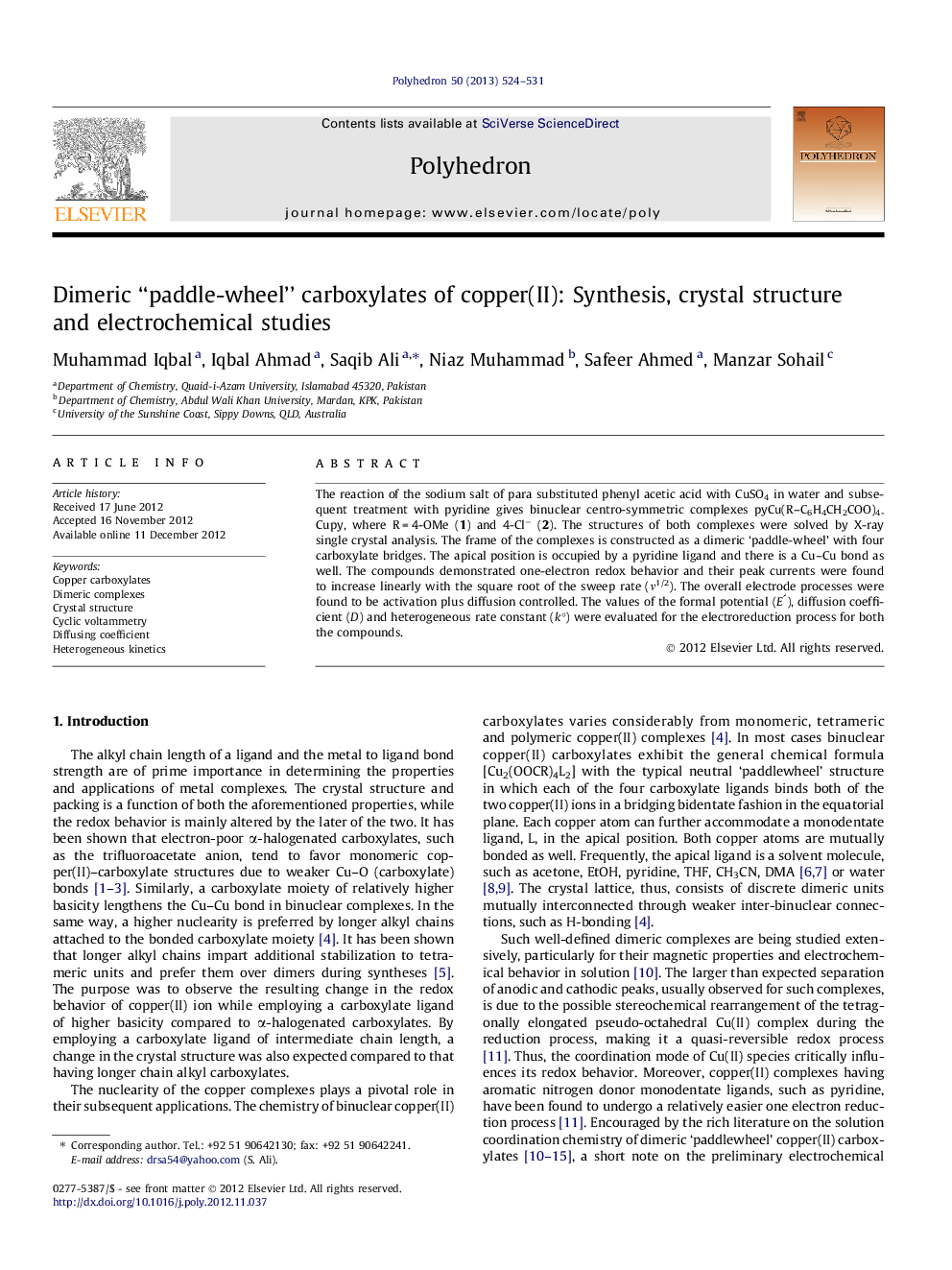| Article ID | Journal | Published Year | Pages | File Type |
|---|---|---|---|---|
| 1334680 | Polyhedron | 2013 | 8 Pages |
The reaction of the sodium salt of para substituted phenyl acetic acid with CuSO4 in water and subsequent treatment with pyridine gives binuclear centro-symmetric complexes pyCu(R–C6H4CH2COO)4Cupy, where R = 4-OMe (1) and 4-Cl− (2). The structures of both complexes were solved by X-ray single crystal analysis. The frame of the complexes is constructed as a dimeric ‘paddle-wheel’ with four carboxylate bridges. The apical position is occupied by a pyridine ligand and there is a Cu–Cu bond as well. The compounds demonstrated one-electron redox behavior and their peak currents were found to increase linearly with the square root of the sweep rate (ν1/2). The overall electrode processes were found to be activation plus diffusion controlled. The values of the formal potential (E ´), diffusion coefficient (D) and heterogeneous rate constant (k°) were evaluated for the electroreduction process for both the compounds.
Graphical abstractThe synthesized compounds have a paddle wheel structure, containing a Cu–Cu bond as well. These compounds give rise to excellent cyclic voltammograms in an electrochemical solution study.Figure optionsDownload full-size imageDownload as PowerPoint slideHighlights► Synthesis of two novel copper complexes. ► Structural and spectroscopic characterization. ► Detailed electrochemical study. ► Heterogeneous kinetics.
